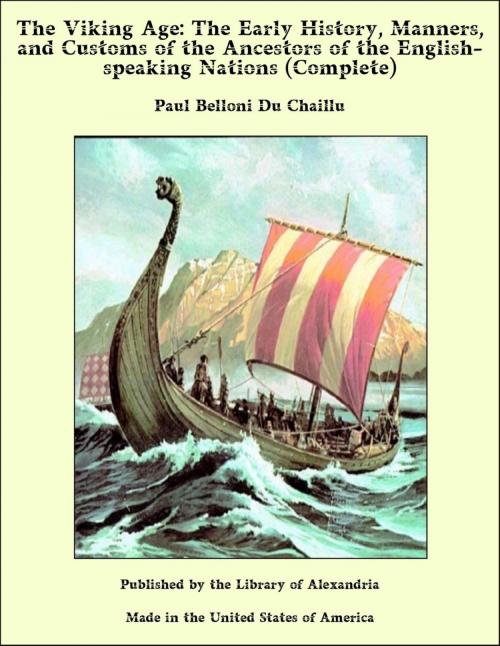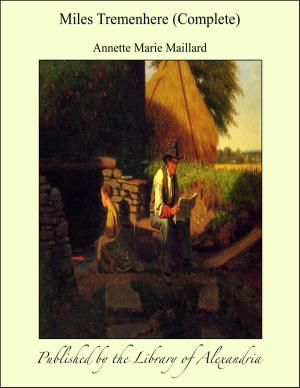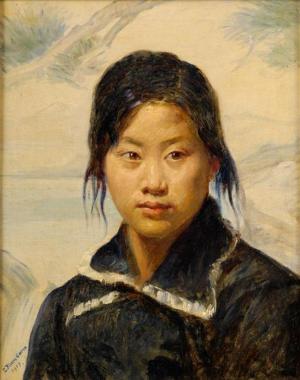The Viking Age: The Early History, Manners, and Customs of the Ancestors of the English-speaking Nations (Complete)
Nonfiction, Religion & Spirituality, New Age, History, Fiction & Literature| Author: | Paul Belloni Du Chaillu | ISBN: | 9781465617828 |
| Publisher: | Library of Alexandria | Publication: | March 8, 2015 |
| Imprint: | Language: | English |
| Author: | Paul Belloni Du Chaillu |
| ISBN: | 9781465617828 |
| Publisher: | Library of Alexandria |
| Publication: | March 8, 2015 |
| Imprint: | |
| Language: | English |
Early antiquities of the North—Literature: English and Frankish chronicles—Early civilisation—Beauty of ornaments, weapons, &c. A study of the ancient literature and abundant archæology of the North gives us a true picture of the character and life of the Norse ancestors of the English-speaking peoples. We can form a satisfactory idea of their religious, social, political, and warlike life. We can follow them from their birth to their grave. We see the infant exposed to die, or water sprinkled, and a name bestowed upon it; follow the child in his education, in his sports; the young man in his practice of arms; the maiden in her domestic duties and embroidery; the adult in his warlike expeditions; hear the clash of swords and the songs of the Scald, looking on and inciting the warriors to greater deeds of daring, or it may be recounting afterwards the glorious death of the hero. We listen to the old man giving his advice at theThing. We learn about their dress, ornaments, implements, weapons; their expressive names and complicated relationships; their dwellings and convivial halls, with their primitive or magnificent furniture; their temples, sacrifices, gods, and sacred ceremonies; their personal appearance, even to the hair, eyes, face and limbs. Their festivals, betrothal and marriage feasts are open to us. We are present at their athletic games preparatory to the stern realities of the life of that period, where honour and renown were won on the battle-field; at the revel and drunken bout; behold the dead warrior on his burning ship or on the pyre, and surrounded by his weapons, horses, slaves, or fallen companions who are to enter with him intoValhalla; look into the death chamber, see the mounding and the Arvel, or inheritance feast. These Norsemen had carriages or chariots, as well as horses, and the numerous skeletons of this animal in graves or bogs prove it to have been in common use at a very early period. Their dress, and the splendour of their riding equipment for war, the richness of the ornamentation of their weapons of offence and defence are often carefully described. Everywhere we see that gold was in the greatest abundance. The descriptions of such wealth might seem to be very much exaggerated; but, as will be seen in the course of this work, the antiquities treasured in the museums of the North bear witness to the truthfulness of the records. The spade has developed the history of Scandinavia, as it has done that of Assyria and Etruria, but in addition the Northmen had the Saga and Edda literature to perpetuate their deeds.
Early antiquities of the North—Literature: English and Frankish chronicles—Early civilisation—Beauty of ornaments, weapons, &c. A study of the ancient literature and abundant archæology of the North gives us a true picture of the character and life of the Norse ancestors of the English-speaking peoples. We can form a satisfactory idea of their religious, social, political, and warlike life. We can follow them from their birth to their grave. We see the infant exposed to die, or water sprinkled, and a name bestowed upon it; follow the child in his education, in his sports; the young man in his practice of arms; the maiden in her domestic duties and embroidery; the adult in his warlike expeditions; hear the clash of swords and the songs of the Scald, looking on and inciting the warriors to greater deeds of daring, or it may be recounting afterwards the glorious death of the hero. We listen to the old man giving his advice at theThing. We learn about their dress, ornaments, implements, weapons; their expressive names and complicated relationships; their dwellings and convivial halls, with their primitive or magnificent furniture; their temples, sacrifices, gods, and sacred ceremonies; their personal appearance, even to the hair, eyes, face and limbs. Their festivals, betrothal and marriage feasts are open to us. We are present at their athletic games preparatory to the stern realities of the life of that period, where honour and renown were won on the battle-field; at the revel and drunken bout; behold the dead warrior on his burning ship or on the pyre, and surrounded by his weapons, horses, slaves, or fallen companions who are to enter with him intoValhalla; look into the death chamber, see the mounding and the Arvel, or inheritance feast. These Norsemen had carriages or chariots, as well as horses, and the numerous skeletons of this animal in graves or bogs prove it to have been in common use at a very early period. Their dress, and the splendour of their riding equipment for war, the richness of the ornamentation of their weapons of offence and defence are often carefully described. Everywhere we see that gold was in the greatest abundance. The descriptions of such wealth might seem to be very much exaggerated; but, as will be seen in the course of this work, the antiquities treasured in the museums of the North bear witness to the truthfulness of the records. The spade has developed the history of Scandinavia, as it has done that of Assyria and Etruria, but in addition the Northmen had the Saga and Edda literature to perpetuate their deeds.















